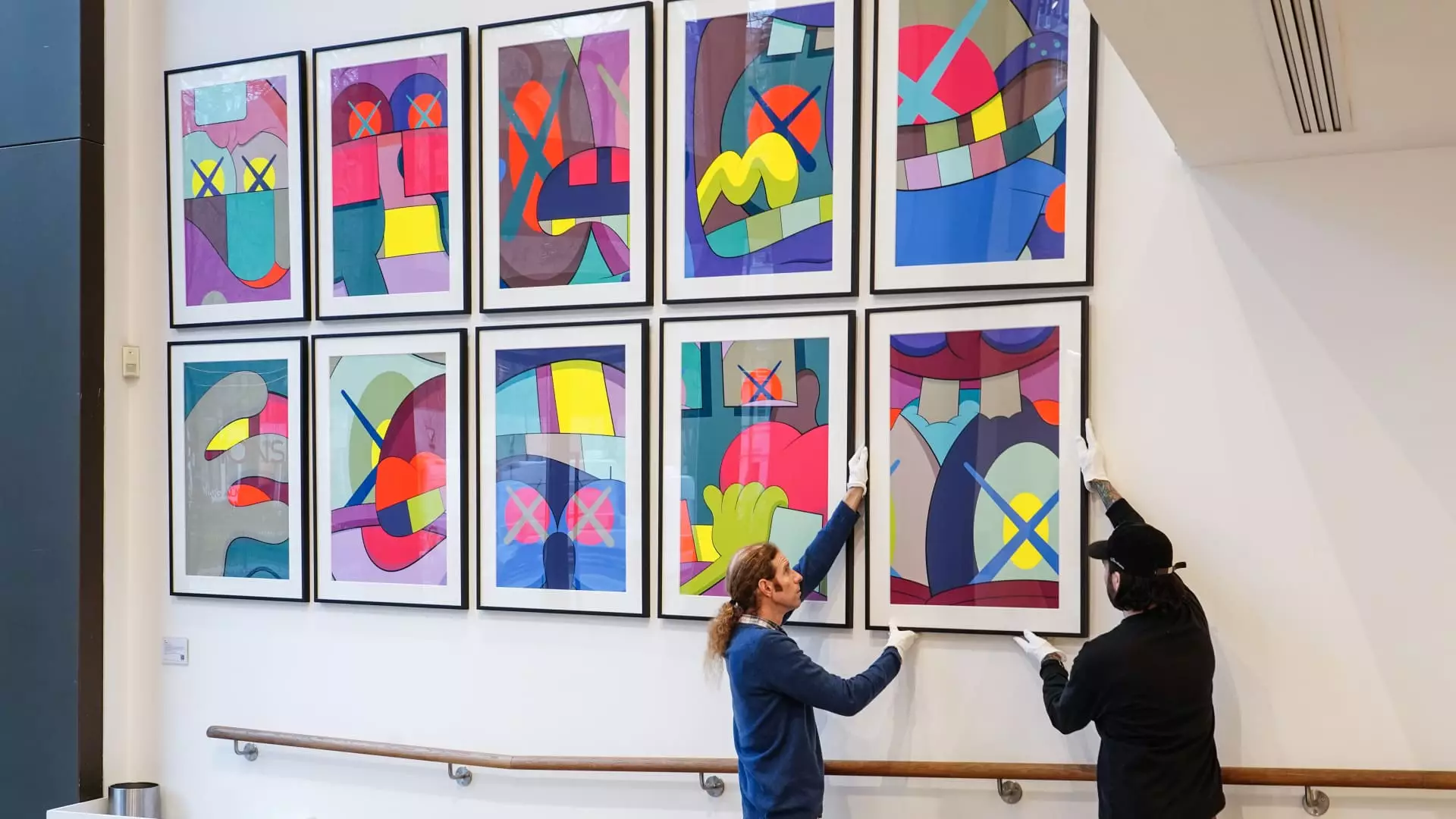For years, the art world has been perceived as a sanctuary of luxury and a safe haven for the ultra-wealthy, yet recent data shatters that illusion. The disheartening decline in global auction sales—down 44% from 2022—reveals a deeper crisis lurking beneath the surface of what once seemed an invincible market. While wealth levels soar, driven by stock markets, real estate, and lucrative business valuations, the art market appears to be misaligned with the broader wealth context. This discrepancy is not merely a cyclical downturn but hints at structural shifts that threaten to redefine the relationship between art and consumer wealth.
The stark reality is that even as individuals at the apex of wealth accumulation continue to amass assets at unprecedented levels, their participation in traditional art collecting is waning. The typical boom-era collectors—predominantly baby boomers—built extensive and valuable art collections, many of which are now hitting the market as their owners downsize, pass away, or simply lose interest. Meanwhile, the emerging wealthy cohorts—millennials and Gen Z—are embracing new forms of luxury and investment, less inclined toward high-priced paintings and more focused on digital assets, experiential luxury, and alternative collectibles. This generational shift suggests the art market’s historical reliance on the “old guard” may be reaching its twilight, raising urgent questions about its future viability.
The Illusion of Economic Confidence: A Wealth Mirage
It’s perplexing. While art sales are plummeting, personal wealth among the top 10% skyrocket—adding $37 trillion since the pandemic—and markets continue their upward trajectory. This paradox underscores a fundamental flaw in how we interpret economic health: wealth accumulation in financial and real estate markets does not proportionally translate into art investment. The correlation between financial wealth and art prices, established over centuries, seems to be fraying at the edges.
Some will argue that temporary downturns are natural, a correction in a long-term upward trend. Others might contend that this signals a profound shift, a “new normal” where the art world’s traditional clientele no longer dominate or shape the market as they once did. The decline in high-end sales—down 39% for works over $10 million—paints a picture of a contraction at the top, while sales of smaller pieces under $5,000 are rising. This pattern could indicate a democratization of art investing, facilitated by online auctions, or it might signal a collapse in demand at the upper echelons, hinting at a structural transformation rather than a temporary lull.
The key question remains: Is this decline part of an inevitable correction or symptomatic of a deep-rooted, systemic reevaluation of values among the wealthy? The answer hinges on the evolving tastes, priorities, and cultural attitudes of the next generation of collectors.
The Generational Shift: The End of an Era or a New Beginning?
The traditional art market was predominantly fueled by baby boomers who invested systematically as their wealth grew through decades of economic expansion. This cohort’s tendency to build extensive collections was driven by a belief in art as a status symbol and a financial hedge. Yet, their influence is waning. Many of these collectors are now downsizing, liquidating their assets, or outright abandoning the old collecting habits altogether.
Emerging wealth holders—digital natives from millennial and Gen Z demographics—are less inclined toward traditional art. Their aesthetic preferences are shaped by the internet age, social media, and digital assets. For them, the NFT boom and online marketplaces are no longer novelties but central to their concept of luxury and investment. While traditional galleries and auction houses scramble to adapt, their efforts to attract these younger buyers—such as integrating online bidding platforms—are a mixed bag. There’s undeniable growth in jewelry, luxury watches, and collectibles like sports memorabilia, which now outperform high-end paintings in sales figures.
This shift could be more than just a changing taste; it may signal a fundamental redefinition of what art consumption and collection mean in the 21st century. The cultural capital once associated with owning paintings by Monet or Picasso is perhaps being replaced by digital tokens and curated experiences. If this trend persists, the venerable auction houses face the frightening prospect that their core business model—centered on high-value, physical art—may become obsolete.
The Industry’s Struggle to Remain Relevant in a Digital Age
Auction houses are working overtime to reinvent themselves, launching online platforms and branching into luxury goods, with notable success in jewelry and rare collectibles. Their strategic pivot reflects both necessity and opportunity—if the traditional art market withers, these institutions aim to capture a new, digitally savvy audience. Yet, questions about authenticity, value, and cultural significance loom large. Are these new buyers genuinely committed to long-term collecting, or are they simply investing in fleeting trends?
The rise of online bidding is democratizing access; nearly 80% of bids at Christie’s now happen digitally. But does this democratization equate to genuine engagement or merely superficial participation? Moreover, the increased focus on jewelry and smaller collectibles signals a potential dilution of the art auction’s prestige, transforming what was once an exclusive, elite market into a more accessible but perhaps less revered space.
As the art world grapples with its structural vulnerabilities, it becomes clear that it cannot ignore the deeper social and cultural currents redefining wealth and taste. The traditional markers of wealth and cultural capital—masterpieces, gallery exhibits, exclusivity—are being challenged by digital innovation and shifting societal values. The question is whether the industry will adapt creatively enough to avoid decline or continue to cling to fading notions of high art’s supremacy.

